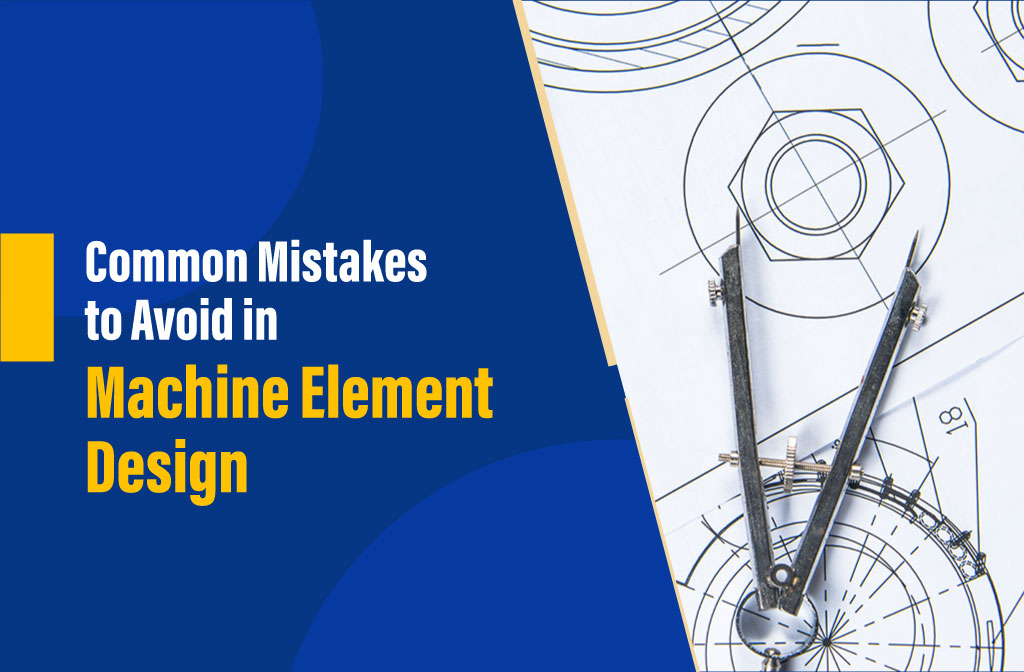
When it comes to designing machines or products, engineers need to focus on the process. Thus, you need to focus on the requirements and try to avoid mistakes when it comes to the product design stages. If it comes to design, there is no undo option. If there are any errors or mistakes, then it is a waste of time and money. The best mechanical colleges in Coimbatore assist the engineers when working with the machinery and teach them how to act in case of potential threats. In this article, we have compiled a list of common mistakes and safety rules that every mechanical engineer is required to know.
Here are 7 common mistakes to eliminate when designing a machine element:
Wrong dimensions:
An essential component of production is dimension. A beginner or engineer would have an idea with the wrong dimensions. As a result, the dimensions of your design need to be logical, professional, free of clutter, and scalable to additional engineers. Verify your measurements carefully because incorrect measurements can result in production mistakes and misinterpretations of the design, which will make the product ineffective.
Engineering drawing:
A poor engineering drawing is another thing that can affect your dimensions. A poor engineering sketch may result in dimensions missing or misread, which indirectly increases production time and lowers product quality. A significant factor in the manufacturing time extension is the requirement for continual review and re-verification of the design.
Fillet Radius:
Fillets are inflexible design elements. During the design phase, you can decide whether to keep them or eliminate them. There are a lot of design errors in fillet use because there is no alternative. The majority of fillet-related design errors are mostly associated with CNC machining and prototype moulding via injection. Since 3D printing uses additive manufacturing, it does not require a fillet.
Fillets are used to reduce stress, enhance appearance, and give a part more strength. To receive these advantages, you need to stay away from having an excessive fillet range.
Design for Manufacturing and Assembly:
It’s important to remember the manufacturing part’s functionality while designing. CNC machining and other manufacturing processes are programmed to follow a CAD model. However, not every feature on the CAD file can be produced using these methods. Leveraging CNC machining to build a CAD file with curved holes is an example of ignoring the implications for manufacturing and assembly. Effective creation of a curved opening will be impossible, regardless of the degrees of freedom of the CNC machines. Thus, it is preferable to carry out the procedure using alternative means. Applying the same logic to other unrealistic functions during processes is a good idea.
Surface Finishes:
Surface finishes play a significant role in the machining process, particularly in high-end precision CNC machining services where aesthetics as well as accuracy are required. On the contrary, stay away from pointless repairs to the surface. Surface finishes ought to be applied during assembly or after the production process. Recall that not every component requires a surface treatment. As a result, you should avoid using needless surface finishes to save money and effort.
Tolerance level:
The measurement of a part’s physical attributes, such as dimension, colour, texture, shape, etc., is called tolerance. It is significant because it draws attention to a part’s ideal function throughout the machining process. However, tolerance differs according to the available machine. It is crucial to establish your design decisions based on the machine’s tolerances as a result. The quality of the manufactured product will decrease if the machine tolerance is not respected during design. Also, you want to stay away from over-tolerance because it can raise production costs.
Complete projects on time:
This is an error in design that is irrelevant to the machining process. But it’s crucial. Project rushing is an assured way to end up with a terrible design. The process of designing machine parts is complex. Before you think about creating, you must have time to reflect, plan, and analyze.
You need to carefully prepare and arrange your timetable in order to prevent rushing projects. Limit the amount of work you take on at any given time and make plans accordingly.
Allowing time for planning, not rushing projects, and other factors will lessen the possibility of the various design errors mentioned above.
Conclusion: Machine safety is an essential topic that encompasses a wide range of factors, including health, safety at work for employees, equipment, and quality standards. It is necessary to think of what if a minor fault in designing machines turns out to be a danger to the people who are working on it. The top engineering colleges for mechanical engineering ensure that engineers learn safety measures while designing and how to be responsible for the machine elements. The use of technologies and applications lets them design machines that are efficient, more significant, and save time and overall cost.
